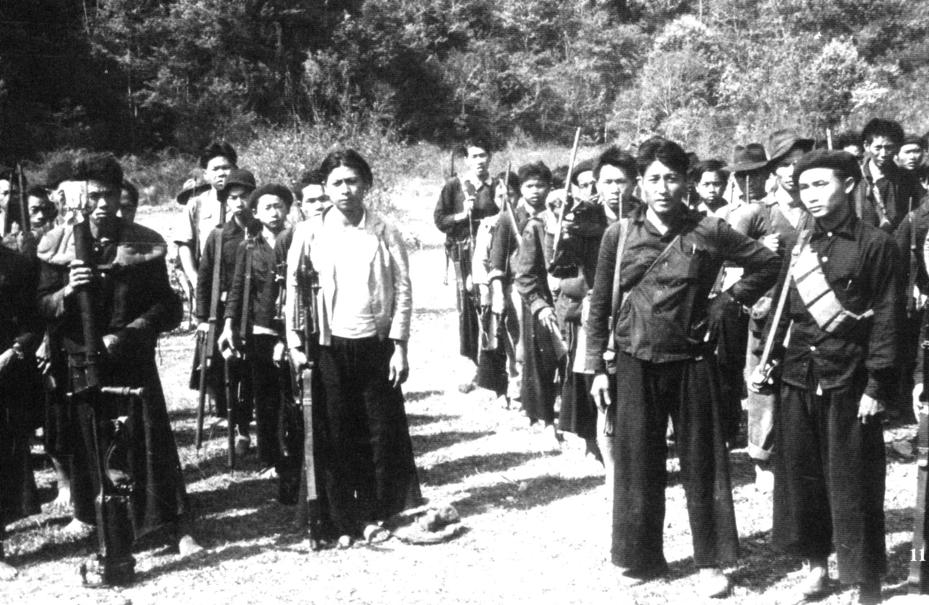
Last month saw the death of J. Vinton Lawrence, known to his friends as Vint. In his later years, Vint became an accomplished painter in rural Connecticut and before that a brilliant caricaturist whose wit-filled drawings of the great and famous graced the pages of The Washington Post and the New Republic.
But I want to draw you back to the year 1962 when Jack Kennedy was in the White House, Indochina was emerging as a national security problem — or so it was believed — and Vint Lawrence was 23 years old, fresh out of Princeton and newly inducted into the CIA. We lost that war 13 years later, but I have always thought that, if we had won, Vint Lawrence would have emerged as legendary a figure as did that earlier Lawrence in the deserts of Arabia.
Vint Lawrence’s assignment was to act as liaison between the American military and a then little-known tribal chieftain, Vang Pao, leader of the Hmong people in northern Laos, near the borders of China and Northern Vietnam. It is a world of hill tribes and forest-covered mountains dotted with dramatic and improbable limestone outcroppings emerging from the mists, so reminiscent of Chinese scroll painting — as remote as any place on earth.
As the Vietnamese were gearing up for their final struggle to re-unify their country, Laos was strategically important to North Vietnam. President Eisenhower had warned the incoming president that Laos would be a major headache for him. And early in his administration, Kennedy went on television to show maps of Laos — which he mispronounced, having it rhyme with chaos instead of mouse — to inform the American people why it was important in the anti-Communist struggle.
Our catastrophic war in Vietnam was still in its American military adviser infancy. Neighboring Laos was threatened by the North Vietnamese, but Geneva conventions had established that Laos was to be neutral, and so the United States, if it were to oppose North Vietnamese incursions, had to do so in secret. Enter Lawrence and the CIA.
The Hmong, who were known as Meo in those days, were a fiercely independent people, splendid fighters, living at the higher elevations. As the struggle for Laos wore on, the Hmong emerged as the only Laotians who could be counted on to fight the North Vietnamese, and fight they did.
The CIA built an airstrip at a remote, all but uninhabited, place called Long Tieng (pronounced Cheng) that became what was often called the “most secret place in the world.’’ For four years, Lawrence’s job was to advise and encourage Vang Pao and help him with the arms and ammunition that the United States was willing to supply him. Over time, the base grew to be home to nearly 40,000 people, becoming the second biggest town in Laos, after the capital, headquarters of a secret war against the North Vietnamese.
When I interviewed Lawrence for a book I was writing, he confirmed to me that the Hmong had a guerilla fighting tradition, skilled at striking fast and then melting back into the forest. But over time, the American military wanted to push the Hmong to fight more conventionally, in ever larger units with the help of artillery and air power in order to harass the enemy. Lawrence saw that, when pushed to fight in more organized units, their skills as guerrilla fighters were no longer as useful, and they began to take unacceptable losses. A decade after Lawrence had gone, the Hmong were defeated, along with all our allies in Indochina.
Vint Lawrence made me think of the Afghans, who also excel at guerilla tactics, as witnessed by their successful struggle against the Soviets in the ’80s. Today, we are training our Afghans to fight as Western armies do, with air support and artillery, and they are taking unacceptable losses against the Taliban who did not lose their guerilla skills
Are we losing another war by taking advantage of another skilled fighting force, training them to fight American style, and getting them killed in the process? I think I know what Lawrence of Laos would say.
H.D.S. Greenway is a former editor of the Globe’s editorial pages and the author of “Foreign Correspondent: A Memoir.’’



